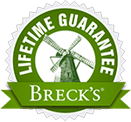The buzzing noises bees create result from their rapidly beating wings, and from the vibration of their thorax and wing muscles while they prepare to feed. It’s a sign that the world’s premiere pollinators are keeping busy helping plants propagate and prosper, and that things are running smoothly on the ecological front. But the bees’ harmonious buzz is dying down – their global population has plummeted in the past few years.
However, there are ways we gardeners can help. Simply adding bee-friendly plants to your garden will go a long way in helping them sustain their numbers.
Here’s a list of bee-friendly plants you can grow to support our bumbling buddies.
Asters are easy on the eye, easy to grow and will easily attract and provide for multitudes of bees and other pollinators. They offer a much sought after food source to bees during the late season, helping them survive the impending cold.
Vibrant flowers, multiple landscaping, culinary and even medicinal uses and of course, a wondrous ability to attract and provide for bees! Bee balm is a multi-purpose, must-have herb for any garden.
Cosmos
These stunning, sun-loving beauties are among the best plants for attracting bees. Cosmos planted in small groups look fabulous in every garden setting and will attract plenty of bees, butterflies and other pollinators. You can plant cosmos as soon as the danger of frosts is past. Deadheading the plants will keep them blooming—and pollinators coming—throughout the summer season.
The Christmas rose remains lively and lovely during the cold months when little else grows. A much welcomed source of nourishment to the bees as they emerge from hibernation!
This vigorous climber is another of the bees’ perennial favorites. Plant them in a sunny location, near enough to other perennials or with enough mulch to keep their feet cool. They’ll produce good quantities of pollen to provide for the bees when they flower.
Poppies are easy to grow and their pretty, open blooms offer an easy access to bees – no wonder they’re so loved by both gardeners and pollinators! Poppies promise plenty of pollen for the bees, plenty of color and beauty for your garden.
Bees will make a bee-line to sedums as soon as they start to bloom—and they bloom for a delightfully long period! For a plant so versatile and carefree, sedum is surprisingly low maintenance and has been know to thrive even in less than ideal soil conditions.
Phlox are known for their dual personalities—they’re available in both creeping and tall varieties. Their bright flowers and strong fragrance are perfect for attracting bees, and because both breeds of phlox bloom for several weeks, they’ll attract bees for a good portion of late spring.



